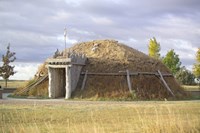- Lesson Plan (75)
- Field Trips (33)
- Student Activities (16)
- Distance Learning (11)
- Other Education Materials (5)
- Science Labs (4)
- Teacher Reference Materials (3)
- Traveling Trunk (2)
- Field Schools & Institutes (1)
- Primary Sources (1)
- Teacher Workshops & Other Programs (1)
- Acadia National Park (19)
- Hawaiʻi Volcanoes National Park (13)
- Mount Rainier National Park (11)
- Craters Of The Moon National Monument & Preserve (6)
- Glacier National Park (6)
- Haleakalā National Park (6)
- Arches National Park (5)
- Grand Canyon National Park (5)
- Shenandoah National Park (4)
- Show More ...
- Science (133)
- Social Studies (41)
- Literacy and Language Arts (28)
- Math (10)
Showing 146 results for Cascade Volcano Observatory ...
- Type: Lesson Plan
- Grade Levels: Upper Elementary: Third Grade through Fifth Grade
John Muir: Observation and Descriptive Writing
- Type: Lesson Plan
- Grade Levels: Upper Elementary: Third Grade through Fifth Grade
During the field trip to John Muir National Historic Site, students were encouraged to reflect on the home and work life of John Muir. They also learned about Muir’s battle to preserve wild places through writing articles and books about nature. His work influenced people all over the world and led to the creation of five National Parks. This exercise will give students a prompt for observation, analytical thinking, and descriptive writing.
Ancient Observatories
Protecting a Volcano
A String of Volcanoes
- Type: Lesson Plan
- Grade Levels: Middle School: Sixth Grade through Eighth Grade

What adaptations do bees have to be effective pollinators and to survive? Students will •observe and dissect the external structural adaptations of honey bees •compare the form of the structural adaptations of honey bees to their functions •explain how the adaptations allow honey bees to be effective pollinators and survivors
Volcano Fan Club
- Type: Science Labs
- Grade Levels: Middle School: Sixth Grade through Eighth Grade
Students simulate tephra transport by placing ingredients in front of running fan, and mapping the resultant layers.
- Type: Lesson Plan
- Grade Levels: Upper Elementary: Third Grade through Fifth Grade
Soda Bottle Volcano and Mount Rainier
Lahar in a Jar
Living with a Volcano in Your Backyard - Teacher Workshop
- Type: Teacher Workshops & Other Programs
- Grade Levels: Middle School: Sixth Grade through Eighth Grade
Tephra Explorer
- Type: Lesson Plan
- Grade Levels: Middle School: Sixth Grade through Eighth Grade
Students view distribution patterns of tephra layers found around Mount Rainier on an isopach map and discover their source. After this lesson, students will be able to answer the questions: How was tephra dispersed in the Cascade string of Volcanoes and specifically at Mount Rainier?
- Type: Lesson Plan
- Grade Levels: Middle School: Sixth Grade through Eighth Grade
This lesson is part one (the first set of OOs!) in a three-part framework called “OO, OO, OO, Nature!” that teaches students about three types of outdoor observation: 1)Observing Outside: observe the natural elements at their school 2)Observing Ourselves: observe our own behavior outdoors 3)Observing Others: observe others’ behavior outdoors The repeating “OO” mnemonic is designed to remind burgeoning nature observers of these three different ways of observing when outdoors.
I Notice, I Wonder: Sea Star in a Tidepool
Make Your Own Astrolabe
Sound Mapping
I Notice, I Wonder: Bullfrog
Create a Brochure
- Type: Field Trips
- Grade Levels: Middle School: Sixth Grade through Eighth Grade
Students will take a field trip to an area of the Niobrara River Valley. During the trip they will use observation techniques and complete a Sensory Observation Sheet and use those ideas to prepare a brochure for a vacation would be taken in the Niobrara River valley.













